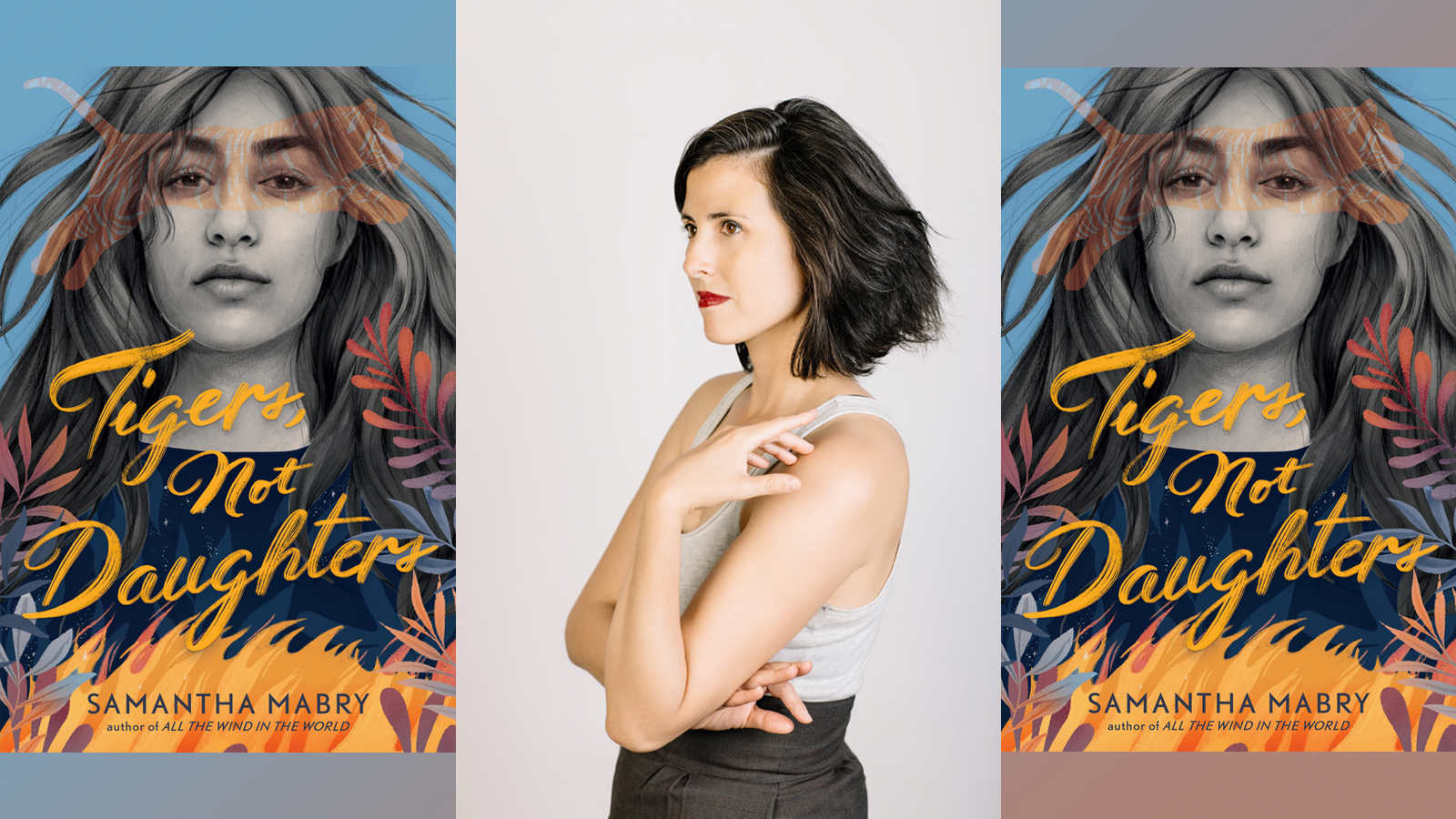Tigers, Not Daughters by Samantha Mabry is one of my absolute favorite YA books that published earlier this year. I had the chance to interview her about her inspirations for writing the novel, her writing process, challenges she experienced while writing and more.
What inspired you to write Tigers, Not Daughters?
A couple of things: for one, I was inspired by the line in King Lear from which I took the title of my novel, because in the play it’s used as such an insult, when I would interpret being a “tiger,” rather than a “daughter” as something of a compliment. I’ve also wanted to write a version of a story of my mother and her sisters, which I’m told has always been such a fractured sisterhood. I also wanted to write a true ghost story. My other books have elements of ghost stories threaded throughout, but this is my first real, real ghost story.
What is your writing process like?
I’m not the kind of writer who has notebooks full of ideas, so just getting started with a story is a challenge. But once I feel like I have an idea worth pursuing, I hold it in my head for a while, weeks really, and try to think of scenes and the setting and the dialogue between characters. Only then, after it’s stuck with me, do I start drafting. Rough drafts take a long time. Revising takes a long time. I’m very slow.
Most writers have a writing ritual, do you have one?
No, not really. In addition to writing, I teach English and have a young son, so I write whenever I can. I don’t write every day or force myself to set a timer and jam out as many words as possible. Especially now, with the pandemic, I have absolutely no time to myself, so I’ve been trying to go about my day and sneak in daydreams about possible story ideas and knit together scenes just in my head and hold them in my memory.
There was a lot of tension through various relationships in the book. Were you drawing on any experience there?
Advertisement
I don’t have any siblings, so I wasn’t drawing on any personal experiences in the realm of sisterhood, no. But like Iridian, I did have the experience of my father finding one of my notebooks, which was awful, and like Jessica, I was once in an emotionally abusive relationship for much longer than I should have been.
Grief has been trending for a while now in YA novels. It’s such a delicate topic to unravel, but you wrote about it so well. What made you include this aspect in the novel, and how did you decide to approach it while weaving together scenes?
I’m not sure I set out to write about grief specifically. More so, I was interested in how a tragedy could occur (the death of a young woman), and how different people in the same house or the same neighborhood would experience or interpret that tragedy so differently. Ana’s death upended so many of the characters’ lives, so I just tried to focus on the different ways that each character would try and stitch their lives back together, knowing that some of those ways would be irrational or unhealthy.
Which character is your favorite?
Advertisement
Jessica is definitely my favorite. I loved writing her mix of anger and vulnerability.
What were some of the challenges you faced when writing the book?
I always knew that there was going to be a ghost in the story, but for a long time I didn’t know what the ghost wanted. This was kind of a big problem! A ghost has to have a reason to haunt, but I just couldn’t figure it out. So, I flip-flopped things around, and worked to tease out what each of the living sisterswanted from the ghost of their dead sister, and that’s what finally broke open the story.
In Latinx culture, daughters/women are expected to be docile, obedient and not disrupt the power dynamic/machismo. What inspired you to subvert this stereotypes in Tigers Not Daughters?
Advertisement
I was trying to draw on the reality that, regardless of “tradition,” some men are terrible and don’t deserve respect.
Do you listen to music while you write? If so, what songs did you listen to while writing Tigers, Not Daughters?
I have to write words in a cone of silence. Music is really distracting when I’m rough drafting, but I can usually listen to “Kiss Them For Me” by Siouxsie and the Banshees on repeat or something by The Afghan Whigs on low, low volume while editing.
Who are some authors or writers that influence your work?
With every project, I’m inspired by certain books or films, but I’m always, always thinking about Isabel Allende, particularly The House of the Spirits, and Annie Dillard because of their writing style and their ability to draw so much out of a single sentence.
What can we expect next from you?
I’m still thinking through what my next novel project will be. But I do have a short story coming out next March in an anthology consisting of YA retellings of Shakespeare plays. Mine is called “We Fail” and is based on Macbeth. It’s set in Texas (of course), amid a series of ice storms.
Lastly, what are you currently reading or listening to?
Oh, ugh. I’m at home with a two year-old, so I’m reading a lot of board books and listening to a lot of Elmo songs. For some reason, my son’s “favorite band” (again, he’s two) is Rush, so we also listen to a lot of prog rock, which isn’t particularly ideal. I’m also very, very slowly reading In the Garden of Beasts by Erik Larson, which is a nonfiction book about the rise of Nazism in the 1930s. It’s unsettling.
Advertisement
